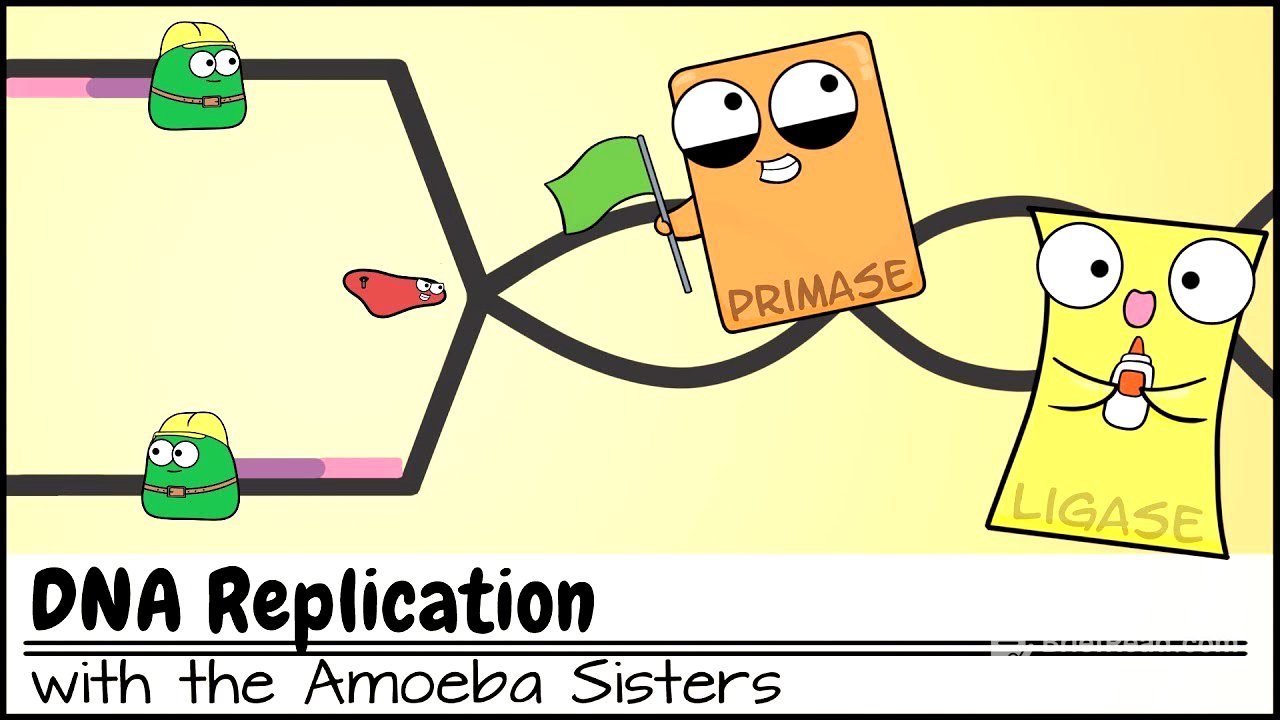TLDR;
This video explains the process of DNA replication, which is the process of making more DNA. It covers the key players involved, including enzymes like helicase, DNA polymerase, primase, and ligase. The video also explains the concept of 5' to 3' and 3' to 5' directionality of DNA strands and how it affects the process of replication. Finally, it highlights the importance of proofreading in DNA replication to ensure accuracy and prevent errors.
- DNA replication is essential for cell division, ensuring each daughter cell receives a complete copy of the genetic material.
- The process involves several key enzymes, each with a specific role in unwinding, building, and joining DNA strands.
- DNA replication occurs in the nucleus of eukaryotic cells and is crucial for both mitosis and meiosis.
Introduction [0:00]
This introductory chapter sets the stage for the video by explaining the importance of DNA and its role in coding for traits. It introduces the concept of DNA replication as the process of making more DNA, which is essential for cell division. The chapter also briefly mentions the location and timing of DNA replication in eukaryotic and prokaryotic cells.
Why do you need DNA replication? [0:11]
This chapter explains the necessity of DNA replication for cell division. It emphasizes that when a cell divides, each daughter cell needs a complete copy of the DNA to function properly. This ensures that the genetic information is passed on accurately to the next generation of cells.
Where and when? [0:27]
This chapter focuses on the location and timing of DNA replication. It explains that in eukaryotic cells, DNA replication occurs in the nucleus, while in prokaryotic cells, it happens in the cytoplasm. The chapter also highlights that DNA replication takes place before cell division, specifically during interphase in eukaryotic cells, to ensure that each daughter cell receives a complete copy of the DNA.
Introducing key player enzymes [1:12]
This chapter introduces the key enzymes involved in DNA replication. It explains that enzymes are proteins that speed up biological reactions and can either build or break down molecules. The chapter then introduces four key enzymes: helicase, DNA polymerase, primase, and ligase, and briefly describes their functions in the replication process.
Initial steps of DNA Replication [2:48]
This chapter delves into the initial steps of DNA replication. It explains that the process begins at a specific region called the origin, where helicase unwinds the DNA double helix. The chapter also introduces single-stranded binding proteins (SSB proteins) that prevent the separated strands from re-joining and topoisomerase, which prevents the DNA from supercoiling. Finally, it explains the role of primase in creating RNA primers that serve as starting points for DNA polymerase.
Explaining 5' to 3' and 3' to 5' [4:04]
This chapter explains the concept of 5' to 3' and 3' to 5' directionality of DNA strands. It clarifies that DNA strands are not identical but complementary, with bases pairing according to specific rules (adenine with thymine, guanine with cytosine). The chapter then explains the numbering system of the sugar molecule in DNA and how it determines the directionality of the strands.
Showing leading and lagging strands in DNA replication [5:09]
This chapter focuses on the leading and lagging strands in DNA replication. It explains that DNA polymerase can only build new strands in the 5' to 3' direction. This leads to the formation of a leading strand, which is synthesized continuously, and a lagging strand, which is synthesized in fragments called Okazaki fragments. The chapter also explains the role of ligase in joining these fragments together. Finally, it emphasizes the semi-conservative nature of DNA replication, where each new DNA molecule contains one original strand and one newly synthesized strand. The chapter concludes by highlighting the importance of proofreading in DNA replication to ensure accuracy and prevent errors.
